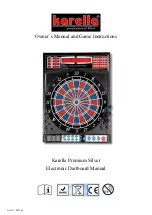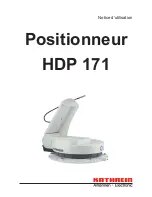
32
Operating Manual
DE
EN
FR
IT
ES
PT
NL
SV
FI
DA
NO
EL
CZ
HU
PL
HR
SR
SK
SL
ET
LT
LV
RO
BG
MK
Variant 1: Standalone operation
In standalone operation, no connection via a network
is required. Convenient operation and configuration
of the charger via the web application is not used in
this variant. Instead, the charger is operated directly
using the buttons on the device. For limiting the
charging current, the settings
50 %
or
100 %
are
available.
Fig. 1: Standalone operation (application example)
Variant 2: Operation via the web application of
the charger.
The charger can be operated easily via the web
browser on a mobile end device (PC, tablet or smart-
phone), thanks to the web application saved on the
charger itself.
A home network in which the charger and device
must be present is required to establish a connection.
A network connection can be made directly via PLC
(Powerline Communication). The device and charger
are connected via a PLC adapter and a router.
The device can access the web application of the
charger via the router.
Operation of the charger can however still be oper-
ated using the buttons on the device. For limiting the
charging current, the settings
50 %
or
100 %
are
available.
Fig. 2: Operation via the web application of the charger
(without energy manager) (application example)
Variant 3: Use via the web application of the
energy manager (PLC network)
If an energy manager is used, the charging current is
limited via the energy manager.
To establish a connection, the energy manager,
charger and device must be located within the same
home network.
In this configuration, the charger and energy
manager each connect to a router via PLC (Powerline
Communication), the energy manager optionally
directly via Ethernet or WiFi. The web application of
the energy manager and of the charger can be
accessed by the device via the router.
Operation of the charger via the buttons on the
device or via the web application of the charger
remains possible. In this case, however, the energy
manager settings for limiting the charging current
are overruled.
f
Refer to chapter “Adding the energy manager” on
page 39.
f
Refer to chapter “Establishing a Connection to
the Charger” on page 39.
Fig. 3: Connection of the charger and energy manager via
a router (application example)
A
Porsche Mobile Charger Plus
B
Electrical socket
A
Porsche Mobile Charger Plus
B
Electrical socket
C
Network connection via power line (PLC)
D
PLC adapter
E
Network connection via Ethernet
F
Router
G
WiFi
H
Mobile device
A
Porsche Mobile Charger Plus
B
Electrical socket
C
Network connection via power line (PLC)
D
PLC adapter
E
Network connection via Ethernet
F
Router
G
WiFi
H
Mobile device
I
Energy manager
J
Network connection via Ethernet (alternative)
















































